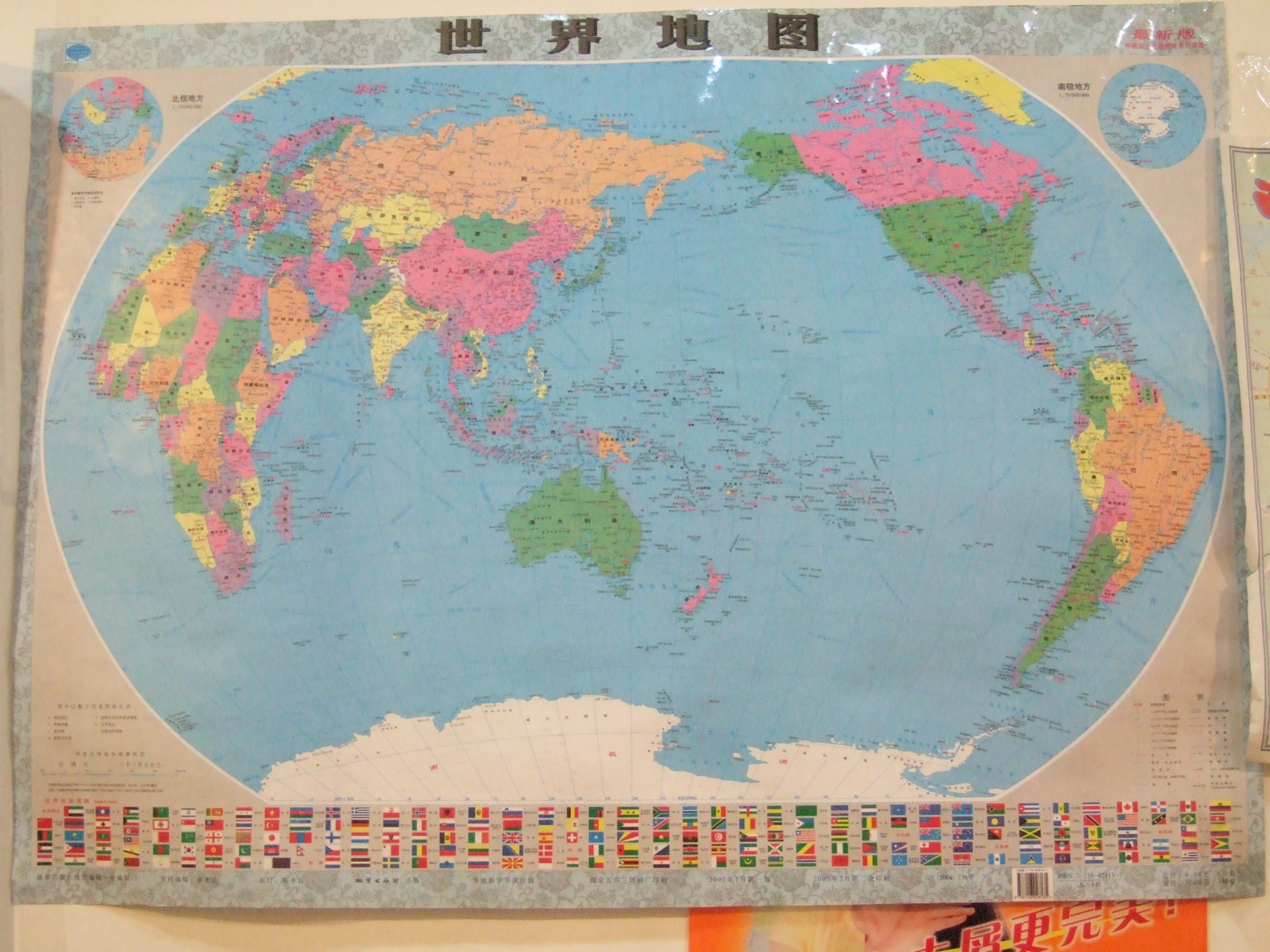China’s Classroom Maps Put the Middle Kingdom at the Center of the World

The Wanguo Qiantu world map, developed in collaboration with the Jesuits in the 1620s in Hangzhou. (Image: Public Domain/Wikimedia Commons)
“China” (zhong guo) is made up of the Chinese characters for middle (中) and country (国). Dating back to around 1000 BCE, inhabitants of what is now China believed their empire to be the Middle Kingdom, as in, at the middle of all of Earth. Indeed, that sentiment prevailed to some extent right up until the past few decades, and some would argue that the Chinese government still teaches its children that China is the center of the world. At leasts, its maps suggest as much.
The Western world is so used to seeing itself as the most critical part of the globe that it’s always a bit odd seeing Europe and North America nudged off to the sides of a world map like casual afterthoughts, or the relish that got squeezed out of a hot dog. That’s how they tend to look on the maps you see today in Chinese classrooms, which haven’t changed all that much since Kunyu Wanguo Quantu—the earliest known Chinese world map printed in the style of the European maps, which dates back to 1602.
 Kunyu Wanguo Quantu, or Map of the Ten Thousand Countries of the Earth. This is an unattributed Japanese copy of the original. (Image: Public Domain/Wikimedia Commons)
Kunyu Wanguo Quantu, or Map of the Ten Thousand Countries of the Earth. This is an unattributed Japanese copy of the original. (Image: Public Domain/Wikimedia Commons)
The map, which can be translated as Map of the Ten Thousand Countries of the Earth, has been traced back to the Chinese cartographer Li Zhizao (1565-1630) of Hangzhou. It was created under the oversight of Jesuit priest Matteo Ricci, who arrived in China in 1583 on a Jesuit mission. Thanks to Ricci, it’s apparently the first Chinese map to show the Americas at all.
Nowadays, the world map hanging on millions of walls in China looks a bit more geographically accurate than the Kunyu Wanguo Quantu, but the basic outline, and message, remain the same. In this version, China may not be the very middle of the world kingdom, but it definitely comes the closest of anybody (aside from the entire Pacific Ocean, which constitutes almost half the map).
So who, or where, can accurately call itself the Middle Kingdom? We’ll leave it to the U.S. and China to battle it out.

A Chinese modern-day world map. Look at all that ocean! (Photo: Harald Groven/flickr)
Map Monday highlights interesting and unusual cartographic pursuits from around the world and through time. Read more Map Monday posts.







Follow us on Twitter to get the latest on the world's hidden wonders.
Like us on Facebook to get the latest on the world's hidden wonders.
Follow us on Twitter Like us on Facebook